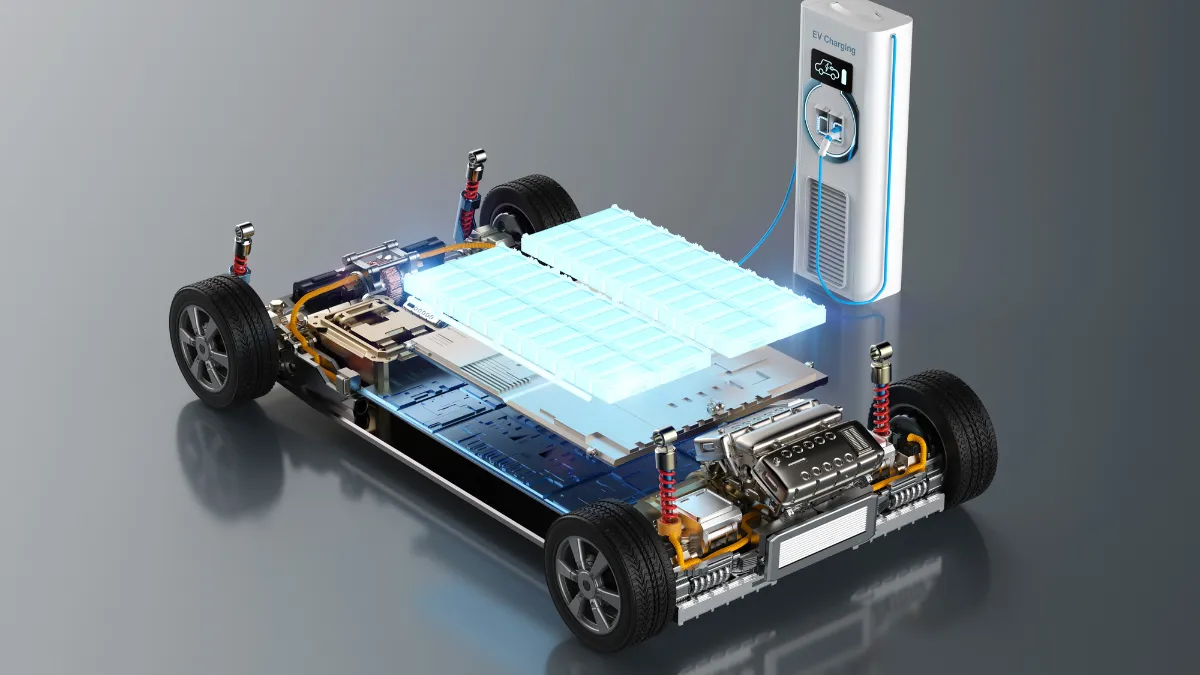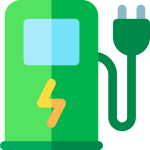
Introduction
As electric vehicles (EVs) become a bigger part of Australia’s streets and roads, understanding the batteries that power them is essential for buyers, owners, and policy-makers. Lithium-ion (Li-ion) batteries have established themselves as the dominant technology, delivering the range, performance, and reliability Australians expect from modern EVs. While Li-ion remains the workhorse, ongoing research is expanding the options, safety, and affordability of battery systems. This guide provides a concise, up-to-date snapshot of how EV batteries work, the chemistries you’ll encounter, practical considerations for Australian conditions, and what’s on the horizon for the technology.
Dominant Technology: Lithium-ion Batteries
Lithium-ion batteries form the backbone of most contemporary EVs. They comprise a cathode, anode, separator, and electrolyte, with lithium ions shuttling between electrodes during charging and discharging. Their high energy density, solid voltage profile, and wide operating temperature range make them well-suited to long-range EVs and high-performance models.
How They Work
During discharge, lithium ions move from the anode to the cathode through the electrolyte, while electrons travel through an external circuit to power the vehicle’s systems. Charging reverses this flow. A Battery Management System (BMS) monitors cell temperature, voltage, and health to optimise safety, longevity, and performance.
Advantages
- High energy density: More energy per unit weight supports longer ranges.
- Consistent voltage: Maintains predictable performance across a discharge cycle.
- Mature ecosystem: Wide availability of cells, modules, charging infrastructure, and service networks.
Types of Li-ion Chemistries
Lithium-ion chemistry isn’t a single recipe; automakers select blends to balance cost, safety, and performance. The main chemistries you’ll encounter are:
Lithium Iron Phosphate (LFP)
- Strengths: Excellent thermal stability, longer cycle life, lower material costs, and strong safety margins.
- Trade-offs: Typically lower energy density than nickel-rich chemistries, which can result in heavier packs for the same range.
- Market use: Increasingly common in mid-range EVs and mainstream models, including many affordable Australian options.
Nickel Manganese Cobalt (NMC)
- Strengths: Strong energy density with good power delivery and durability.
- Market use: Widely used across many mass-market and premium EVs worldwide. Variants differ in nickel content to balance energy density with stability.
Nickel Cobalt Aluminum (NCA)
- Strengths: Very high energy density and strong performance in certain high-end applications.
- Trade-offs: Higher cost and thermal considerations; more complex supply chain considerations.
- Market use: Present in some high-performance models, particularly in early iterations from certain brands.
Nickel-Metal Hydride (NiMH)
- How they work: Older EVs and plug-in hybrids (PHEVs) have used NiMH cells; they’re durable and tolerant of abuse.
- Advantages: Robust cycle life and abuse tolerance.
- Challenges: Higher cost, lower energy density, and higher self-discharge compared with modern Li-ion chemistries.
- Market use: Largely phased out in new BEVs; some PHEVs still rely on NiMH in reserve or auxiliary roles.
Older Technology: NiMH remains relevant mainly for historical context and some hybrid platforms, but Li-ion dominates new battery systems.
Emerging and Future Technologies
The search for safer, cheaper, and higher-energy-density batteries continues, with several promising directions:
Solid-State Batteries
- What they are: Replace the liquid electrolyte with a solid electrolyte, which can significantly reduce the risk of thermal runaway and potentially increase energy density.
- Status: Active development with pilot production and prototypes from major manufacturers; commercial-scale availability remains on the horizon, with timelines varying by company and region.
- Potential benefits for Australia: Improved safety at higher energy densities could support longer-range EVs and lighter weight batteries.
Aluminum-ion Batteries
- Concept: Exploring aluminum as a primary electrode material to cut production costs and use abundant resources.
- Stage: Predominantly in research and development stages with pilot studies; not yet widely deployed in consumer vehicles.
Hybrid and Alternative Chemistries
- Examples: Some researchers are investigating hybrid systems that blend chemistries (e.g., incorporating sodium-ion or other ions alongside lithium) to optimize cost, energy density, and performance.
- Notable mention: Concepts such as the FreeVoy battery have been cited as examples of hybrid approaches, illustrating ongoing exploration in the field.
- Practical takeaway: While exciting, most of these hybrids are still in laboratory or early-stage development and are not yet standard in production EVs.
Other Trends shaping the near term
- Silicon anodes: Increasing the percentage of silicon in the anode to boost energy density, with ongoing work to manage volume expansion and cycle life.
- Sodium-ion viability: As a lower-cost alternative leveraging abundant sodium, sodium-ion batteries show potential for future cost reductions, particularly in stationary storage and some budget EV segments.
- Battery recycling and circularity: Policy and industry momentum toward recovering materials (lithium, cobalt, nickel) to lower lifecycle costs and environmental impact.
Factors Influencing Battery Performance
Battery Performance is shaped by a combination of chemistry, hardware, and usage patterns:
Battery Management Systems (BMS)
- Role: The BMS monitors cell voltages, temperatures, state of charge, and health metrics to optimise charging, safety, and longevity.
- Importance: A robust BMS is essential for maximizing battery life, enabling safe fast charging, and preserving performance over time.
Charging Practices
- Do’s: For longevity, favour slower charging when possible (Level 2 home charging) and avoid unnecessary rapid DC charging when not needed.
- Don’ts: Avoid keeping the battery at 100% state of charge for extended periods or letting it drop to very low levels regularly; both can accelerate capacity fade.
- Practical Australian note: Home charging with a smart charger, optimised to your vehicle’s recommended DoD, can help preserve battery health while supporting daily driving needs.
Temperature Management
- Impact: Extreme temperatures, particularly heat, can degrade battery capacity and shorten cycle life.
- Australian context: Climate considerations are important-hot summers can strain pack temperatures in unshaded areas, while cold winter temps can reduce immediate available range. Parking in shade, using cabin pre-conditioning, and efficient thermal management can mitigate effects.
Conclusion
Electric vehicle batteries are advancing rapidly, with Li-ion chemistries continuing to offer the best balance of safety, cost, and performance for the foreseeable future. In Australia, where climate, grid dynamics, and driving patterns vary widely, the choice of chemistry (LFP versus nickel-rich options), the strength of the BMS, and charging habits will collectively determine real-world range and longevity. For many buyers, an LFP-based EV can offer a compelling blend of affordability, safety, and durability, especially in high-use, urban, or regional settings where charging access is variable. Looking ahead, solid-state batteries and hybrid chemistries hold promise, but widespread commercial deployment is still evolving. Australian drivers should stay informed about model options, charging infrastructure, and best practices to maximise battery life and value over the life of their vehicle.
FAQs
What is the difference between Li-ion chemistries such as LFP, NMC, and NCA?
- LFP (Lithium Iron Phosphate) offers excellent thermal stability, long cycle life, and lower cost, with slightly lower energy density.
- NMC (Nickel Manganese Cobalt) provides a balanced approach to energy density and stability, with recent variants pushing higher nickel content for more range.
- NCA (Nickel Cobalt Aluminum) delivers very high energy density and strong performance in some high-end applications, but at higher cost and thermal management demands.
Which Li-ion chemistry is best for Australian conditions?
- For many buyers prioritising affordability and longevity, LFP is a strong choice due to its thermal stability and good cycle life, especially in climates with hot summers. For higher energy density and performance, NMC or NCA-based packs may be preferable, depending on the vehicle and driving needs.
How long do EV batteries last in real-world use?
- Battery life varies by chemistry, usage, climate, and charging patterns. Most modern EVs are designed to retain a substantial portion of their original capacity after 8-10 years of typical use. Proper charging practices and avoiding extreme DoD can help maximise longevity.
How does temperature affect battery performance?
- Temperature influences both the instantaneous range and long-term longevity. Extreme heat can accelerate capacity fade and stress the battery, while cold weather reduces available range temporarily. Thermal management and pre-conditioning are important tools for Australian drivers.
When will solid-state batteries be common in consumer EVs?
- Solid-state technology is progressing, with pilot lines and prototypes from major manufacturers. Widespread commercialization is anticipated over the next several years, but timelines depend on manufacturing scale-up, supply chains, and cost reductions.
Is it better to charge my EV to 80% or 100%?
- For daily use, charging to around 80% is often recommended to balance range with longevity. Some journeys may require charging to 100% before long trips; consult your vehicle’s guidelines and plan for charging opportunities.
What role can home solar and energy storage play in EV charging?
- Solar plus home storage can reduce charging costs and emissions, particularly if charging during daylight hours. A properly sized system with a smart charger and a suitable energy management setup can optimise charging while supporting grid resilience.
How should I choose a battery-equipped EV for long-term value?
- Consider the chemistries offered in your target models (LFP vs. nickel-rich options), the vehicle’s range and efficiency, the BMS capabilities, availability of service networks, and potential costs associated with battery replacement or retirement. Assess how you typically drive, access to charging, and climate considerations to select a configuration that aligns with your needs and budget.
About EV Evolution
EV Evolution is the leading online platform dedicated to Australian electric vehicle owners and enthusiasts. We foster a vibrant community, delivering essential EV news and insights, and enhancing user engagement through our innovative, AI-powered chatbot for dynamic discussions. Our mission is to empower Australian electric vehicle owners and enthusiasts by fostering a vibrant, AI-driven online community that connects, informs, and advances the nation’s electric vehicle landscape.




